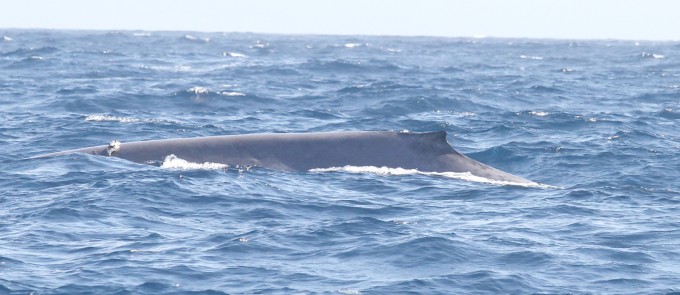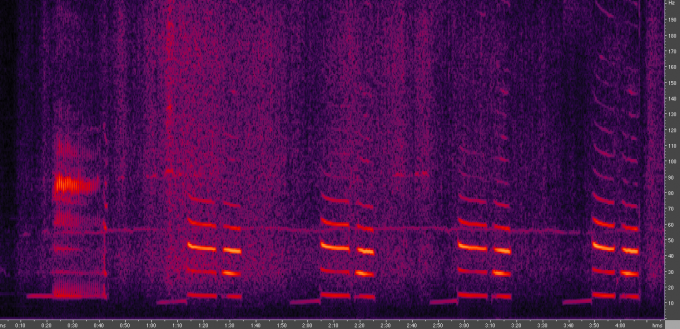We’ve had some less than ideal weather the past few days out at sea for SOCAL-BRS but we have still managed to get some work done. We’ve worked offshore as much as possible but with Santa Ana winds several days ago shifting the prevailing winds around and complicating some of our typical sheltered areas we haven’t been able to work some of the preferred areas. Yesterday we had several acoustic detections of beaked whales in deeper water near Catalina Island and spent much of the day trying to tag Rissos dolphins, but the sea conditions were just a little too rough. We did get two suction cup tags attached to common dolphins, although neither remained attached long enough to conduct a controlled exposure experiment (CEE).
One of the behavioral conditions we are interested in testing responses within for baleen whales are calling animals. We have found several slowly traveling and apparently calling blue whales as we have been working offshore. These animals are typically harder to get tags attached to, especially in the rougher conditions you can see, and we struck out once but did get one caller tagged and a CEE done. Below is a photo of a DTAG attached to a traveling/calling blue whale from two days ago south of Santa Barbara Island (photo taken under NMFS permit #14343 – credit: A. Friedlaender).

We had a variety of listening sensors in the water while this animal was tagged, including the tag itself which collected dozens of calls of several types (see below – courtesy A. Stimpert). This animal was traveling slowly and conducting relatively long but shallow dives consistent with calling behavior. There were several animals calling that we heard, but these clear signals were most likely coming from the tagged animal. Having these clear call records synchronized with fine scale moving behavior in the context of a behavioral response experiment provides us with some important new information about responses to sound in animals with different behavioral contexts.

